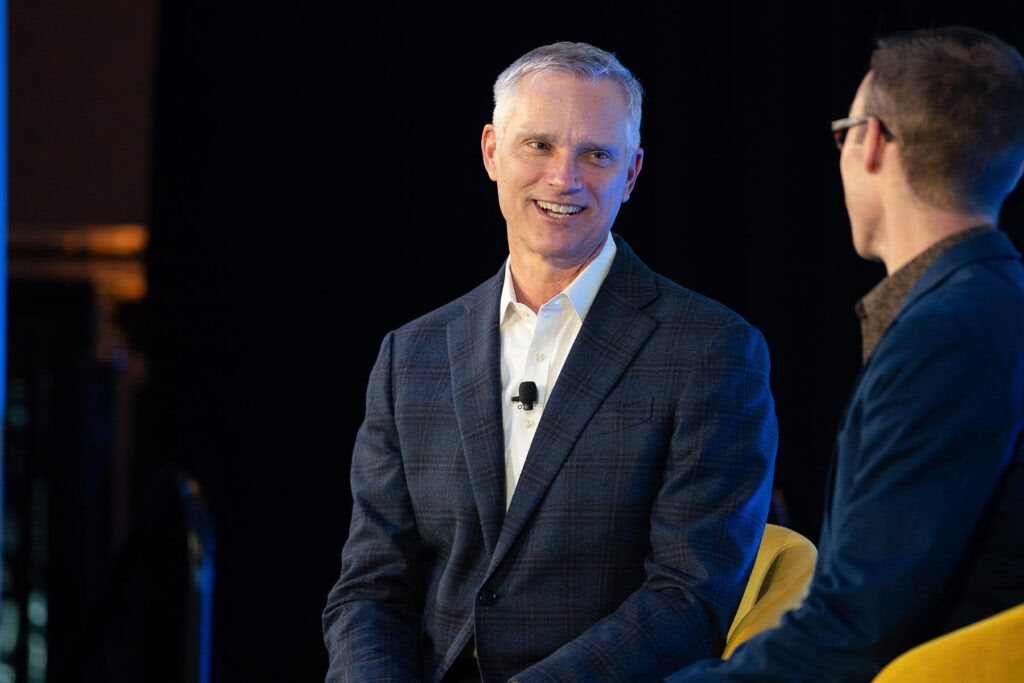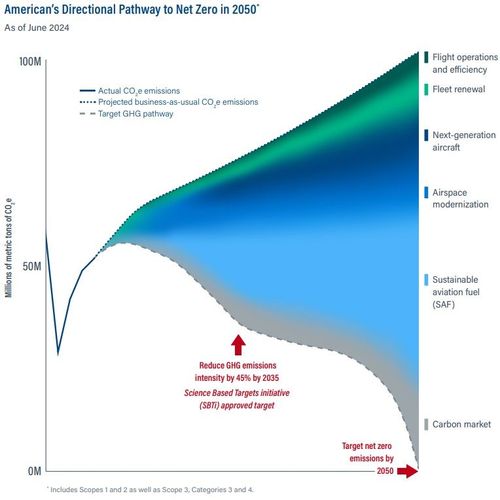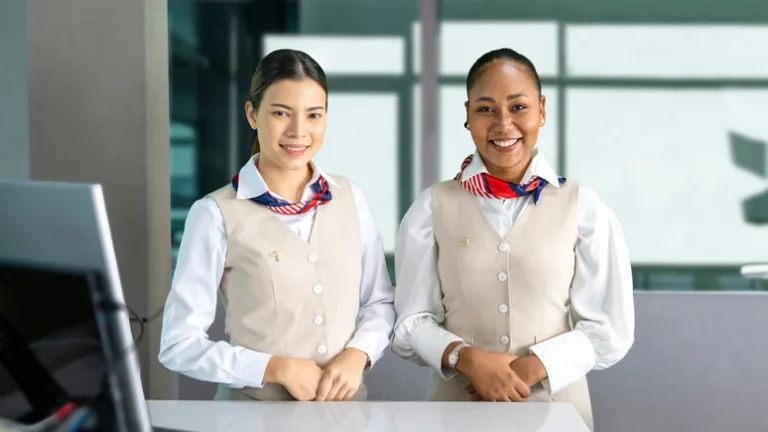American Airlines Seeks to Repair Travel Agency Ties After Direct Bookings Strategy
American reintroduced its fares to the channels where travel agencies want to book them, and Isom acknowledged their absence was their biggest “pain point.” The airline, too, will be feeling pain for some time.American Airlines CEO Robert Isom outlined numerous steps the airline is taking to “course correct” after abandoning a direct distribution strategy it embarked on in 2023.
The airline could take a $1.5 billion revenue hit this year because of the policy’s ongoing effects.
“I’ll just be frank,” Isom said in answer to an analyst’s question during the airline’s second quarter earnings call Thursday. “We overindexed on direct, and we’ve got to find a way to get — to play in the richer pool of indirect revenue. And that starts with having content, having relationships — positive relationships with travel management companies and agencies and then supporting our corporate customers in the ways that they feel valued.”
“Our near-term actions are concentrated on winning back customers … [and] our share of revenue in agency and business channels,” he said.
Isom explained what he sees as the lingering revenue impact this year from the airline’s falling out with business travel and travel agency customers.
“We think that it’s had about three-quarters of billion dollars impact in the first six months of the year, and we’ve more or less assumed that is going to be what happens in the back half,” he said. “But I’ll say this, though: It doesn’t take into account what we’re going to be doing to try to win back our share.”
OneWorld Partners Also Had Misgivings
It wasn’t just travel management companies, corporations and travel agencies that rebelled against American’s distribution strategy. The airline’s OneWorld partners, including British Airways, and other airline partners were also giving American Airlines heat.
“In the case of BA, we have decades-long business with them as a joint business across the Atlantic,” Isom said. “And I know that they are incredibly interested in us getting back on track.”
He said OneWorld partners provided American with the same sort of advice that American was hearing from its customers.
“They want us back and available in every place that we can be sold,” Isom said. “They want to participate in a richer mix of business. They want to certainly be attentive to the way our product is sold in the U.S.”
Isom also said the airline is adding sales and support teams dedicated to dealing with corporate and agency customers.
“I’m confident we’ll regain the standing in the agency and corporate channel,” Isom said. “And that, combined with our direct distribution strength, will put us back on track to producing revenues that will meet and exceed our long-term financial targets.”
American reintroduced its fares to the channels where travel agencies want to book them, and Isom acknowledged their absence was their biggest “pain point.” The airline, too, will be feeling pain for some time.American Airlines CEO Robert Isom outlined numerous steps the airline is taking to “course correct” after abandoning a direct distribution strategy it embarked on in 2023.
The airline could take a $1.5 billion revenue hit this year because of the policy’s ongoing effects.
“I’ll just be frank,” Isom said in answer to an analyst’s question during the airline’s second quarter earnings call Thursday. “We overindexed on direct, and we’ve got to find a way to get — to play in the richer pool of indirect revenue. And that starts with having content, having relationships — positive relationships with travel management companies and agencies and then supporting our corporate customers in the ways that they feel valued.”
“Our near-term actions are concentrated on winning back customers … [and] our share of revenue in agency and business channels,” he said.
Isom explained what he sees as the lingering revenue impact this year from the airline’s falling out with business travel and travel agency customers.
“We think that it’s had about three-quarters of billion dollars impact in the first six months of the year, and we’ve more or less assumed that is going to be what happens in the back half,” he said. “But I’ll say this, though: It doesn’t take into account what we’re going to be doing to try to win back our share.”
OneWorld Partners Also Had Misgivings
It wasn’t just travel management companies, corporations and travel agencies that rebelled against American’s distribution strategy. The airline’s OneWorld partners, including British Airways, and other airline partners were also giving American Airlines heat.
“In the case of BA, we have decades-long business with them as a joint business across the Atlantic,” Isom said. “And I know that they are incredibly interested in us getting back on track.”
He said OneWorld partners provided American with the same sort of advice that American was hearing from its customers.
“They want us back and available in every place that we can be sold,” Isom said. “They want to participate in a richer mix of business. They want to certainly be attentive to the way our product is sold in the U.S.”
Isom also said the airline is adding sales and support teams dedicated to dealing with corporate and agency customers.
“I’m confident we’ll regain the standing in the agency and corporate channel,” Isom said. “And that, combined with our direct distribution strength, will put us back on track to producing revenues that will meet and exceed our long-term financial targets.”American reintroduced its fares to the channels where travel agencies want to book them, and Isom acknowledged their absence was their biggest “pain point.” The airline, too, will be feeling pain for some time.American Airlines CEO Robert Isom outlined numerous steps the airline is taking to “course correct” after abandoning a direct distribution strategy it embarked on in 2023.
The airline could take a $1.5 billion revenue hit this year because of the policy’s ongoing effects.
“I’ll just be frank,” Isom said in answer to an analyst’s question during the airline’s second quarter earnings call Thursday. “We overindexed on direct, and we’ve got to find a way to get — to play in the richer pool of indirect revenue. And that starts with having content, having relationships — positive relationships with travel management companies and agencies and then supporting our corporate customers in the ways that they feel valued.”
“Our near-term actions are concentrated on winning back customers … [and] our share of revenue in agency and business channels,” he said.
Isom explained what he sees as the lingering revenue impact this year from the airline’s falling out with business travel and travel agency customers.
“We think that it’s had about three-quarters of billion dollars impact in the first six months of the year, and we’ve more or less assumed that is going to be what happens in the back half,” he said. “But I’ll say this, though: It doesn’t take into account what we’re going to be doing to try to win back our share.”
OneWorld Partners Also Had Misgivings
It wasn’t just travel management companies, corporations and travel agencies that rebelled against American’s distribution strategy. The airline’s OneWorld partners, including British Airways, and other airline partners were also giving American Airlines heat.
“In the case of BA, we have decades-long business with them as a joint business across the Atlantic,” Isom said. “And I know that they are incredibly interested in us getting back on track.”
He said OneWorld partners provided American with the same sort of advice that American was hearing from its customers.
“They want us back and available in every place that we can be sold,” Isom said. “They want to participate in a richer mix of business. They want to certainly be attentive to the way our product is sold in the U.S.”
Isom also said the airline is adding sales and support teams dedicated to dealing with corporate and agency customers.
“I’m confident we’ll regain the standing in the agency and corporate channel,” Isom said. “And that, combined with our direct distribution strength, will put us back on track to producing revenues that will meet and exceed our long-term financial targets.”






